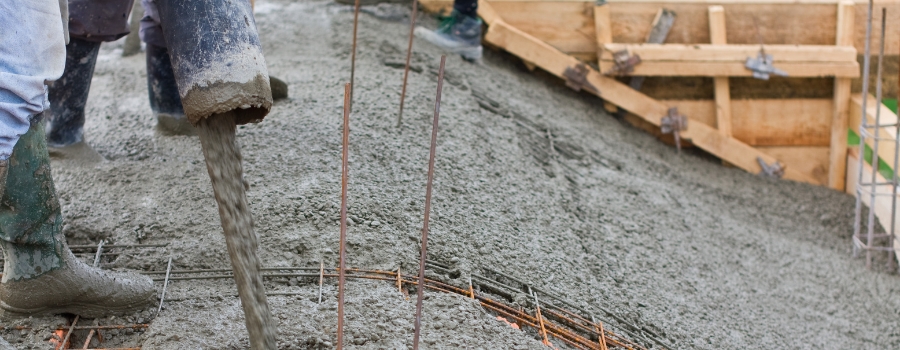Blog Post

How to Calculate Concrete Volume for UK DIY and Professional Projects
At Save Time Haulage, we understand the importance of precise concrete volume calculations for both DIY enthusiasts and professional contractors. Whether you’re working on a small home project or a large-scale commercial build, getting the right amount of concrete is critical to saving time, money, and reducing waste. In this comprehensive guide, we’ll walk you through how to calculate the required concrete volume for various types of projects, explore the differences between Ready Mix Concrete and Onsite Mix Concrete, and explain the advantages of working with a Concrete Supplier and using a Concrete Pump to make your project run smoothly.
Why Accurate Concrete Volume Calculation is Important
Accurate concrete calculations ensure your project goes smoothly without unnecessary delays, costs, or material waste. Whether you're pouring a foundation, driveway, or columns, knowing the exact amount of Ready Mix Concrete or Onsite Mix Concrete you need is crucial. Underestimating your required volume can lead to delays and additional costs, while overestimating could result in wasted material and budget overruns.
Getting the measurements right ensures that your concrete is delivered on time and in the exact amount needed, whether by a Concrete Supplier or mixed onsite with the help of a Concrete Pump for ease of application.
Factors to Consider Before Calculating Concrete Volume
Before starting your calculations, there are several factors to keep in mind that affect the required amount of concrete for your project:
Step-by-Step Guide to Calculating Concrete Volume
The most straightforward formula for calculating concrete volume is:
Volume=Length×Width×Depth\text{Volume} = \text{Length} \times \text{Width} \times \text{Depth}Volume=Length×Width×Depth
This formula calculates volume in cubic meters (m³), which is the standard unit of measurement for concrete in the UK. Let’s take a closer look at how this works for different types of projects.
Calculating Concrete Volume for Flat Slabs
Flat slabs are often used for driveways, patios, or floor foundations, and calculating the right amount of concrete is relatively straightforward.
Calculating Concrete Volume for Columns
Columns are vertical elements, and their volume is calculated using the formula for the volume of a cylinder:
Volume of Column=π×(Diameter 2)2×Height\text{Volume of Column} = \pi \times \left(\frac{\text{Diameter}}{2}\right)^2 \times \text{Height}Volume of Column=π×(2 Diameter )2×Height
For a column with a diameter of 0.5 meters and a height of 3 meters: Volume=3.14×(0.52)2×3=0.59 m3\text{Volume} = 3.14 \times \left(\frac{0.5}{2}\right)^2 \times 3 = 0.59 \, \text{m}^3Volume=3.14×(20.5 )2×3=0.59m3
Thus, one column would require approximately 0.59 cubic meters of concrete.
Calculating Concrete Volume for Footings
Footings form the base for many structures and typically require more concrete than slabs or columns. Here’s how to calculate the volume for a footing:
Choosing the Right Type of Concrete: Ready Mix vs. Onsite Mix
At Save Time Haulage, we offer both Ready Mix Concrete and Onsite Mix Concrete to suit your project’s needs. Understanding the difference between these two can help you choose the best option.
Ready Mix Concrete
Ready Mix Concrete is produced in a batching plant and delivered to the construction site in ready-to-use form. This option is ideal for larger projects or situations where consistent quality is essential. Key benefits include:
Onsite Mix Concrete
For smaller or more customized projects, Onsite Mix Concrete might be a better choice. With this method, concrete is mixed directly at the job site. Benefits include:
Whether you choose Ready Mix Concrete for its precision or Onsite Mix Concrete for its adaptability, you can be assured of quality and efficiency.
Why Choose a Concrete Supplier and Pump for Your Project?
Working with a trusted Concrete Supplier ensures you get the right mix delivered exactly when and where you need it. This partnership can be especially helpful for larger projects or more complex sites.
Advantages of a Concrete Supplier
Benefits of Using a Concrete Pump
For hard-to-reach places or high-rise structures, a Concrete Pump is invaluable. Instead of relying on manual labor to transport concrete across a job site, a pump allows precise placement, saving both time and effort.
At Save Time Haulage, we offer high-quality Concrete Pump services, ensuring that no matter the size or complexity of your project, the concrete is placed exactly where it needs to be.
Tips for Accurate Concrete Volume Calculation
To help ensure your concrete calculations are accurate, follow these practical tips:
Using Concrete Calculators
For more complicated shapes or projects with varied depths, online concrete calculators can help streamline the process. Simply input your project’s dimensions, and the calculator will estimate the required volume of Ready Mix Concrete or Onsite Mix Concrete. Always round up slightly to ensure you have enough material on hand.
Conclusion
Whether you’re a DIY enthusiast or a professional contractor, calculating concrete volume accurately is a key step in ensuring your project is a success. By understanding how to measure and calculate the necessary amount of concrete for your project, you can avoid common mistakes like under-ordering or over-ordering.
Choosing between Ready Mix Concrete and Onsite Mix Concrete depends on the size and scope of your project, but either option ensures high-quality results. Additionally, partnering with a reputable Concrete Supplier like Save Time Haulage and utilizing a Concrete Pump for more complex jobs will help ensure your concrete is delivered and applied efficiently, saving both time and money.
By following the steps and advice provided in this guide, your next project will be well on its way to success with the exact amount of concrete needed. Let Save Time Haulage be your trusted partner in concrete supply and delivery, ensuring your projects are built on a solid foundation every time.